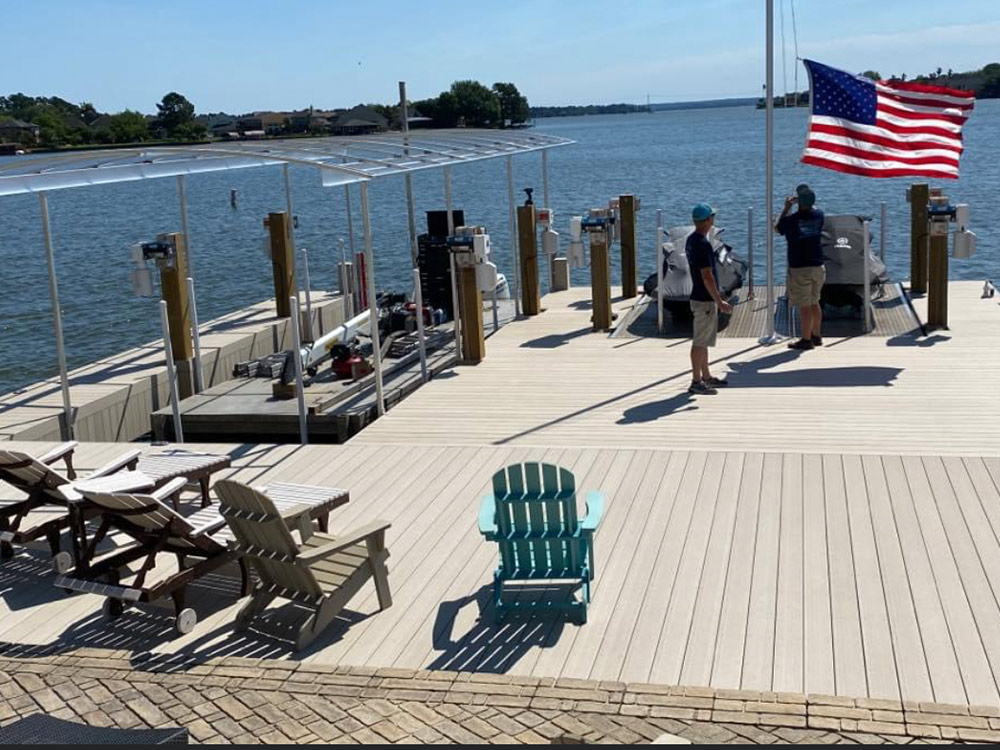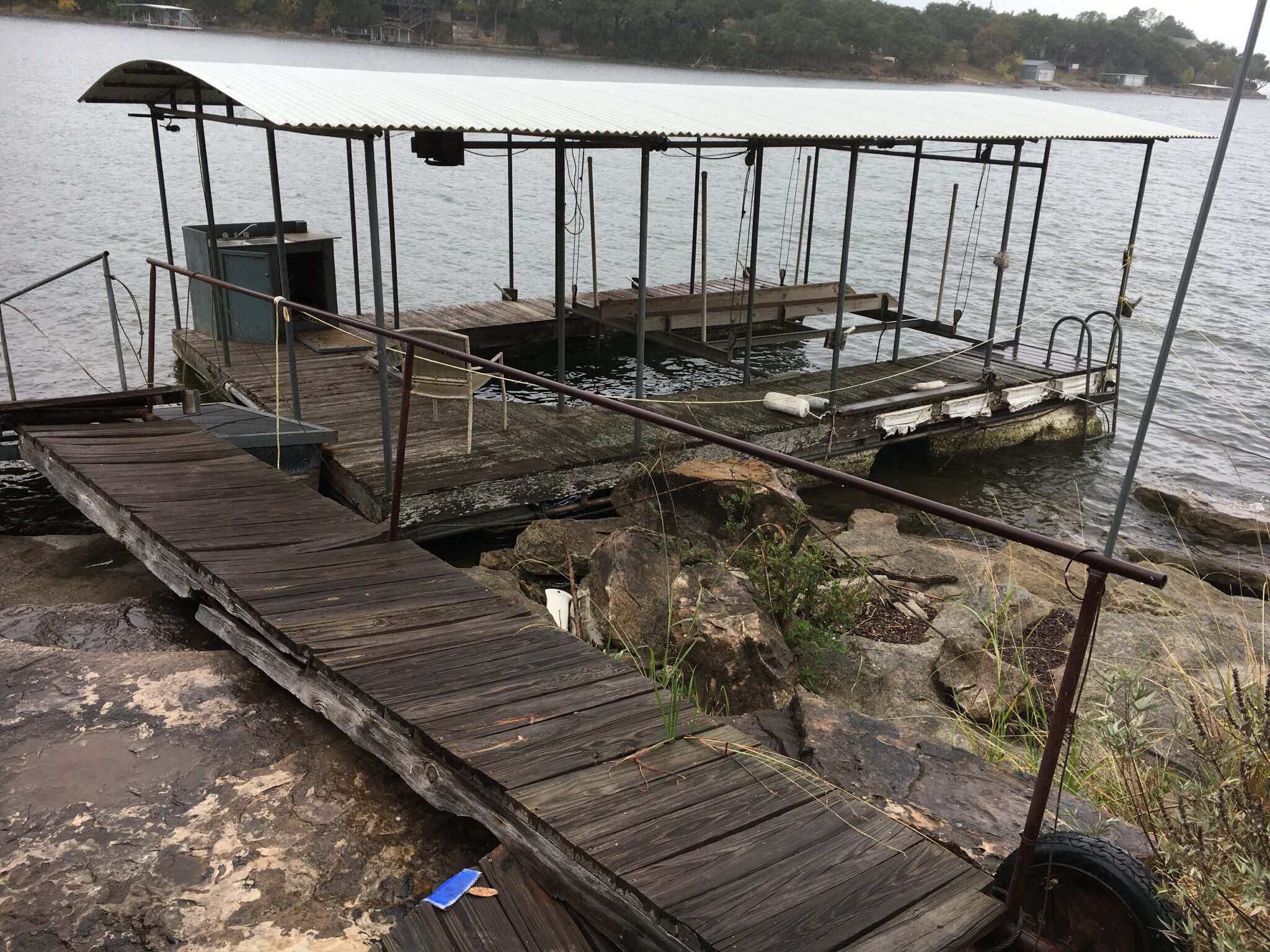Efficient Dock Repair Work Techniques: Making Certain Architectural Honesty
Guaranteeing the structural stability of anchors through reliable repair service strategies is critical for the longevity and safety and security of aquatic centers. This entails a multi-faceted technique starting with thorough evaluations utilizing sophisticated technologies like finder tools and remotely operated vehicles (ROVs) to identify both visible and hid problems. Ultimately, picking the ideal repair service materials, such as composite materials and corrosion-resistant alloys, is important for toughness. Architectural support techniques, including the implementation of cross-bracing systems and load-distribution plates, play an important role in mitigating anxiety points. Nevertheless, the relevance of these techniques becomes noticeable when checking out sophisticated repair service approaches and preventative upkeep strategies.
Analyzing Dock Damage
Examining dock damages is a vital very first step in guaranteeing the architectural honesty and safety of any docking center. This first evaluation involves a detailed inspection to identify both surprise and noticeable damages. Key elements to take a look at consist of the dock's structure, pilings, decking, and equipment. Each element has to be scrutinized for signs of wear, rot, corrosion, or other kinds of degradation that could jeopardize the structural integrity.
Architectural designers or certified examiners normally execute these analyses making use of specialized methods and tools. Undersea evaluations may employ finder devices or from another location ran cars (ROVs) to identify immersed damages. Above water, visual assessments are enhanced by utilizing dampness meters and various other diagnostic devices to discover underlying issues not instantly noticeable to the naked eye.

Picking Repair Service Products
Choosing the proper repair work materials is a crucial action in the dock reconstruction process, one that directly affects the durability and performance of the fixed structure. Material option should be driven by elements such as environmental problems, load-bearing demands, and compatibility with existing dock components.
Along with wood, composite products are significantly prominent due to their resilience and reduced upkeep needs. Composites, generally made from a mix of plastic and timber fibers, offer outstanding resistance to rot, insects, and UV damage. For metal anchors, selecting corrosion-resistant alloys such as galvanized steel or marine-grade aluminum is essential to stop rust and make sure structural stability in saline water conditions.
Epoxy resins and marine-grade sealers are essential for fixing splits and sealing joints, offering a water-proof barrier and enhancing the dock's overall stamina. By diligently selecting premium products, dock repairs can achieve resilient results, consequently guarding against future degradation and guaranteeing risk-free, trusted use.
Structural Reinforcement Methods
Efficient architectural support strategies are crucial in making sure the security and durability of dock repair services. One basic approach entails using steel or composite support bars (rebar) within concrete frameworks. Rebar provides additional tensile strength, avoiding cracks and distributing loads more evenly. This method is particularly effective for anchors revealed to hefty tons or extreme ecological conditions.
Another important technique is the application of fiber-reinforced polymers (FRP) These products use high strength-to-weight ratios and excellent resistance to deterioration, making them excellent for strengthening concrete or wooden docks. FRP can be used in sheets or strips and bound with epoxy resins to boost architectural integrity.
Supporting and anchoring systems also play a crucial function in structural support. Cross-bracing, utilizing metal or wood beam of lights, can counteract side forces, lowering persuading and movement. Anchoring systems, such as helical piers or driven heaps, supply a stable structure by transferring lots to deeper, extra steady soil layers.
Last but not least, the combination of load-distribution plates can help disperse weight much more equally across the dock's surface area, alleviating local tension factors. These methods jointly ensure that docks remain safe and durable, capable of standing up to the roughness of their functional environment.
Advanced Fixing Approaches

An additional advanced method includes undersea welding, which enables fixings to be conducted without the need to dewater the area. This technique is especially useful for resolving structural concerns in immersed dock elements, making sure very little interruption to operations. Improved welding techniques, coupled with robotic systems, deliver accuracy and dependability, consequently prolonging the lifespan of the dock.
Additionally, cathodic defense systems are applied to avoid deterioration in metal dock frameworks. By utilizing sacrificial anodes or amazed current systems, these strategies properly alleviate the electrochemical procedures that bring about material degeneration.
Last but not least, advanced monitoring technologies, such as architectural health and wellness monitoring (SHM) systems, supply real-time data on the problem of dock frameworks. These systems enable aggressive maintenance and timely treatments, ultimately making certain the long-lasting architectural stability of the dock.
Upkeep and Prevention
Upkeep and prevention are basic ideas that underpin the long life and security of dock frameworks. Regular examinations are vital, allowing for very early detection of wear and tear, prospective weak points, and environmental influences. A proactive strategy, including regular checks for deterioration, rot, and structural changes, reduces pricey repairs and extends the dock's functional life.
Preventive measures should include using protective finishes to metal components to safeguard versus rust and utilizing cured timber to resist decay. In addition, ensuring appropriate drain and air flow can prevent water accumulation, which is a typical reason for architectural degradation. Including high quality products and adhering to maker standards throughout building and construction and repair work phases likewise play critical duties in enhancing sturdiness.

Training employees in dock upkeep ideal methods makes sure regular application of safety nets. Leveraging technical breakthroughs, such as drones for examinations and sensing units for real-time tracking, can even more enhance upkeep initiatives. By prioritizing maintenance and visit the website prevention, dock owners can make certain architectural integrity, operational safety and security, and cost-efficient administration over the dock's lifespan.
Conclusion
In verdict, maintaining the structural stability of aquatic click to find out more centers necessitates detailed dock fixing strategies. Advanced repair work methods, combined with normal upkeep techniques, ensure the dock stays functional and secure under varied environmental conditions.
Making sure the architectural honesty of anchors via effective repair techniques is critical for the durability and security of aquatic centers.Choosing the proper repair service products is an essential action in the dock reconstruction procedure, one that straight affects the long life and performance of the repaired structure.Efficient structural reinforcement techniques are important in making sure the security and durability of dock repair services. By focusing on upkeep and avoidance, dock proprietors can guarantee structural integrity, operational safety, and cost-effective management over the dock's life expectancy.
In final thought, keeping the architectural honesty of marine facilities demands detailed dock repair service techniques.